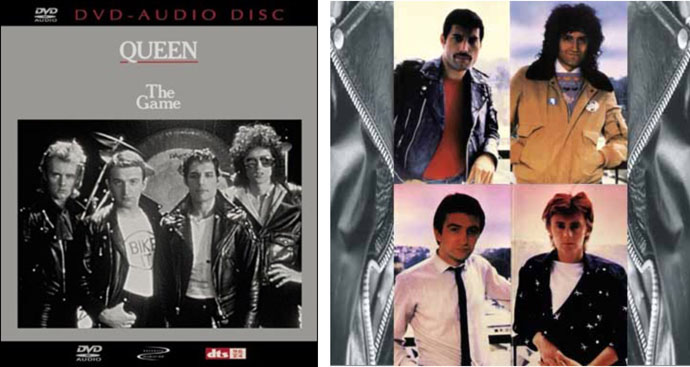TECHNICAL
The Game DVD-A
——————–
NOTES BY JUSTIN SHIRLEY-SMITH
17 March 2003

Brian asked me to write about The Game DVD-A, from a technical perspective. Some of this also applies to Greatest Video Hits 1. Still awake?
Transfers and Duplicates
Since Queen own nearly all their own recordings, and have a comprehensive database of them, it was not difficult to locate the required master tapes. We treat these original tapes extremely carefully and try to minimise playing them due to their obvious value and relative vulnerability. Therefore, we never mix directly from the original tapes – we always work from copies.
The multi-track masters for The Game are analogue 2 inch, 24 track tapes. Many of these tapes suffer from ‘sticky tape syndrome’, which means that they gradually absorb moisture, even in a dry storeroom. If a tape is played in this condition it will disintegrate on the machine. It is therefore common practice now to bake tapes, and this is what we did. Baking tapes entails a accurately controlled heat treatment which effectively dries them out, allowing approximately 30 days to play them before they start to absorb moisture again.
The last time these tapes were played was in preparation for the Japanese Queen Karaoke CD in 1996. At that time, we copied the tapes onto 48kHz, 16bit digital multi-track tape (DASH format), which was the format Queen had been using since The Miracle recordings. Incidentally, the Karaoke CD was mixed by Neil Amor and myself (a fact which escaped the credits!), at a budget induced rate of about one mix per hour!! I think they sound pretty good all the same.
This time we had a good budget, enough time and much improved digital recording technology. Soon after they were baked we transferred the original masters onto 192kHz 24bit Pro-Tools HD – the highest resolution available for digital multi-track to date. On many earlier Queen recordings, Dolby noise reduction was deliberately switched off on some tracks, and although these Game track-sheets were not marked as such, we suspected that some individual tracks were not Dolby encoded. For this reason we transferred the tapes twice; once through a Dolby rack, and a second time bypassing it. This meant that, if later I felt an instrument or vocal had been Dolby decoded when it shouldn’t have been, Kris could retrieve and re-sync the un-decoded version; something we did do a few of times for these mixes. We call these digital copies Working Duplicates.
Another copy of each tape was made on the same format as the original; in this case analogue 2 inch, 24 track. We call these copies Preservation Duplicates because, unlike the digital copies, we will not play these again unless the originals become unplayable for any reason.